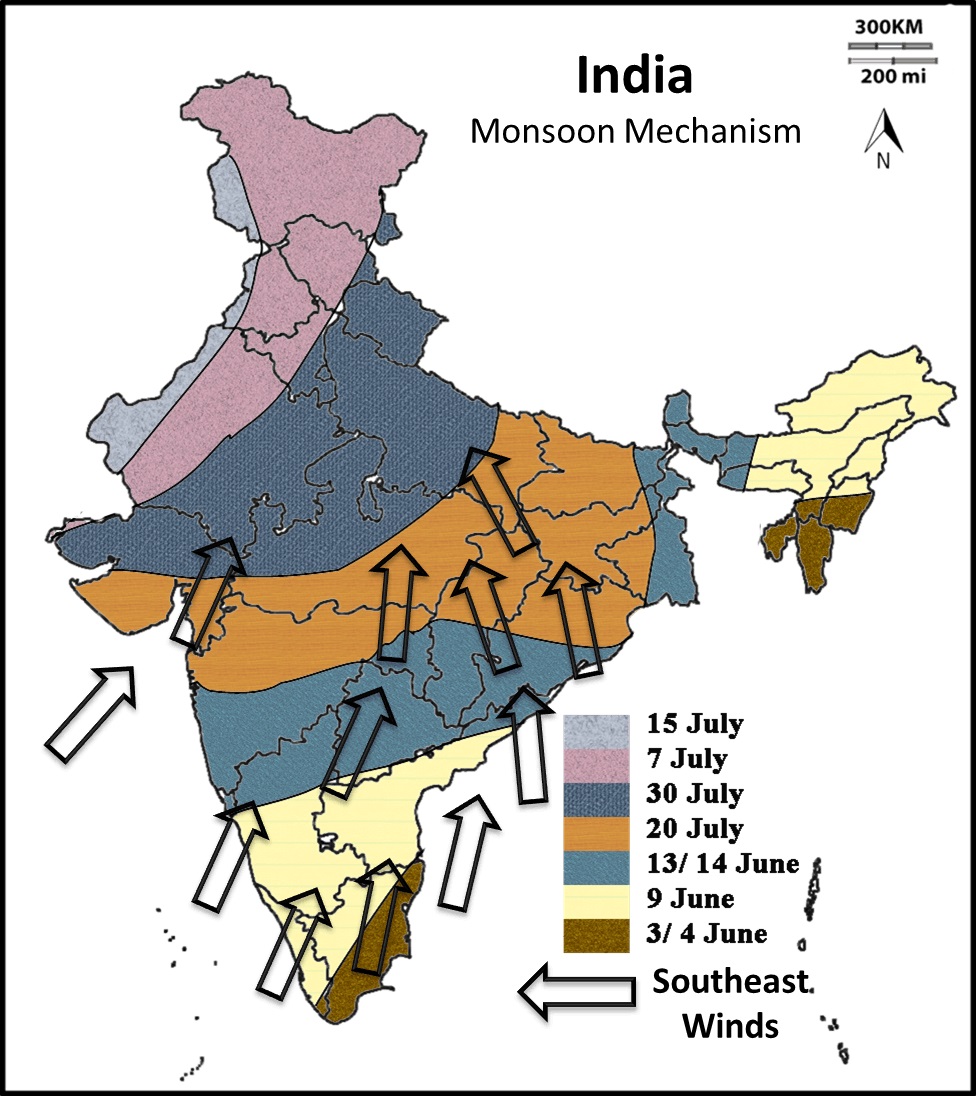India is a country of diverse climatic regions. Temperature and rainfall differ widely across the length and width of the sub-continent. As we all know, the Indian climate is classified as a Monsoon climate. In fact, Monsoon rules over not only India and Pakistan but also the South-East countries. Interestingly, the rainy season does not cover the entire country uniformly. While in North India the rains are the rule during the summer season, the South India undergoes precipitation during the winters. Below is given a brief note on the salient features of the Indian climate in general as well as the distribution of rainfall in the different areas of the country.
Temperature and Moisture
As the greater part of the India falls within the Tropics, the climate is tropical, high temperatures being the rule in the low-lands, lower temperature in the high-lands. In the northern parts, the temperatures in winter are about the same as an English summer. Perhaps the greatest feature of the Indian climate is its regularity. The rainfall is determined to a great extent by the monsoons which are seasonal wind waves. The South-West Monsoon, as it is called, blows across a large expanse of water and collects moisture which is deposited in the form of rain when the winds rise to cross the Western Ghats. It gives 90% of the total rainfall in India. The rainy season lasts from June to October. The North-East Monsoon blows across a large ares of land and is therefore a dry monsoon except that in crossing the Bay of Bengal it collects moisture which is deposited on the slopes of the Eastern Ghats in South-East India.
Monsoon Waves

The South-West Monsoon divides itself into two currents- Bombay and Bengal Currents. The Bengal current gives moisture and precipitation to Bengal, Assam, Bihar, Odisha and the Bombay current gives moisture to the area between the sea and the mountain ranges on the Western (Malabar) Coast. The remaining moisture passes on to the Himalayan range without giving any rain to Sindh, Madhya Pradesh, Rajasthan and Western Punjab i.e. Pakistan’s Punjab, as it does not encounter on its way any mountainous regions covered with forests. The Western coast-strip, Malwa and India’s Punjab get some rain from this monsoon.
At some stage, the Bengal and Burma currents confluence together and proceed west and help to water moderately the whole tract from Bengal to the Punjab. The rainfall in India is not well-distributed. It varies between 467.4 in inches at Mawsynram to about 18 inches in Rajasthan. Rainfall at Kolkata is about 65 inches, at Darjeeling about 120 inches.
Winter Season Rains in South
The part of the Deccan immediately behind the Western Ghats, however, has a very moderate and scant rainfall and so too have the plains in the north-west. Where the rains are abundant, the temperature is mitigated. But in the arid region this is naturally the hottest period of the year. The cool season, or the season of the North-West Monsoon, lasts from November to February (inclusive) and this is the rainy season for the south-eastern plains. In North-India there are great extremes of temperature, the mercury rising in some places to 120 degree °F in the hot season and sinking below freezing-point with cold season. In Southern India there are fewer extremes and the daily range is less.
